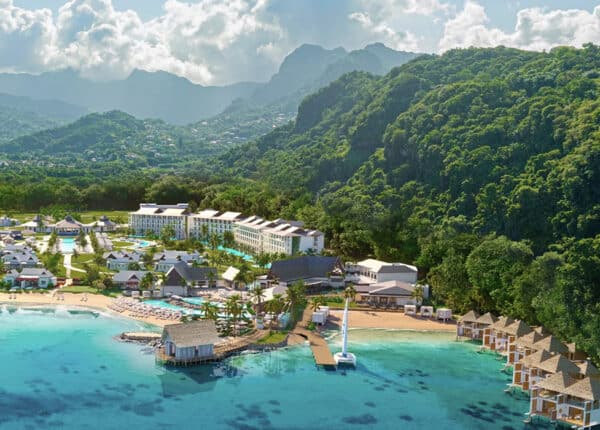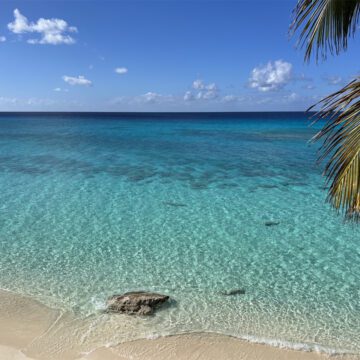Above: Outplanted staghorn (Acropora cervicornis) coral after one year of growth. (Photo: Kemit Amon Lewis)
By Michael W Beck, PhD
Op-Ed Contributor
ELEUTHERA, Bahamas (25° 8′ 22″ N; 76° 8′ 59″ W) is one of my favourite islands.
Unfortunately, storms seem to like it too. The eyes of both Irene and Sandy passed right over the island before coming to the United States.
Storms have always been a fact of life in the Caribbean, but their impacts are getting worse.
Global warming, poor development choices and the loss of protective coastal habitat, such as coral reefs, all increase risk.
Of the many actions needed to reduce these risks, a smart and cost-effective first step is to restore the coral reefs that provide our first line of coastal defense.
In a recent global study, we found that coral reefs are an extremely powerful tool for coastal protection.
On average, healthy coral reefs reduce wave energy by 97 percent—greatly limiting the force of waves that could otherwise hit coastlines causing erosion and flooding.
This defense is important to nearly 200 million people around the world who live in areas that receive risk reduction benefits from reefs or bear the costs if the reefs are lost or degraded.
In places where reefs have been degraded, it often means we have lost the living “skin” of corals from the top of these natural sea walls.
The corals have built and grown this wall of calcium carbonate over hundreds to thousands of years. The wall will not be lost immediately, but waves will erode it away over time if we do not act to restore the structure and the corals.
The good news is that we know that corals can recover.
There has been significant recovery in many places around the world from the severe coral bleaching that occurred in the extremely warm El Niño year of 1998.
Recovery was most sustained where other stresses on the reef, such as pollution, were managed well.
And there is reason for further optimism.
At a time when towns, cities and countries are making major investments in climate and weather-related hazard protection, we found that coral reef protection makes economic, ecological and practical risk-reduction sense.
The average cost of building artificial breakwaters is $19,791 per meter, compared to $1,290 per meter for projects focused coral reef restoration.
And of course healthy corals also provide significant benefits to the health of fisheries and tourism— industries that provide tens of billions of dollars annually across the Caribbean.
Toward this end, we have been working with community leaders in Grenville Bay, Grenada on reef restoration.
We have looked at the shoreline evolution in the bay and found that just a little loss of their coastal barrier reef explains 60 years of erosion and sedimentation.
More importantly, using the same coastal engineering tools for designing artificial breakwaters, we can show how coral reef restoration would decrease erosion and likely even flooding.
In coastal communities from the Bahamas to Grenada, we shouldn’t be investing just in built “grey” infrastructure like seawalls and breakwaters that will further degrade coastal habitats, and are typically more expensive to build and maintain. Instead, we should also be integrating investments in conserving and restoring “blue” infrastructure like our coral reefs—the sea wall nature built.
Michael Beck is Lead Marine Scientist at The Nature Conservancy. For a full bio, click here.
Note: the opinions expressed in Caribbean Journal Op-Eds are those of the author and do not necessarily reflect the views of the Caribbean Journal.






